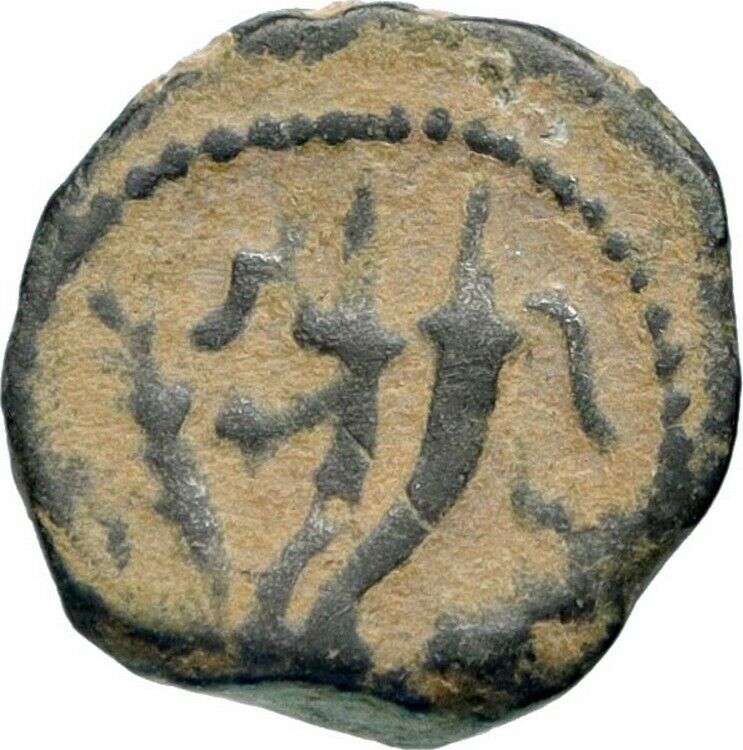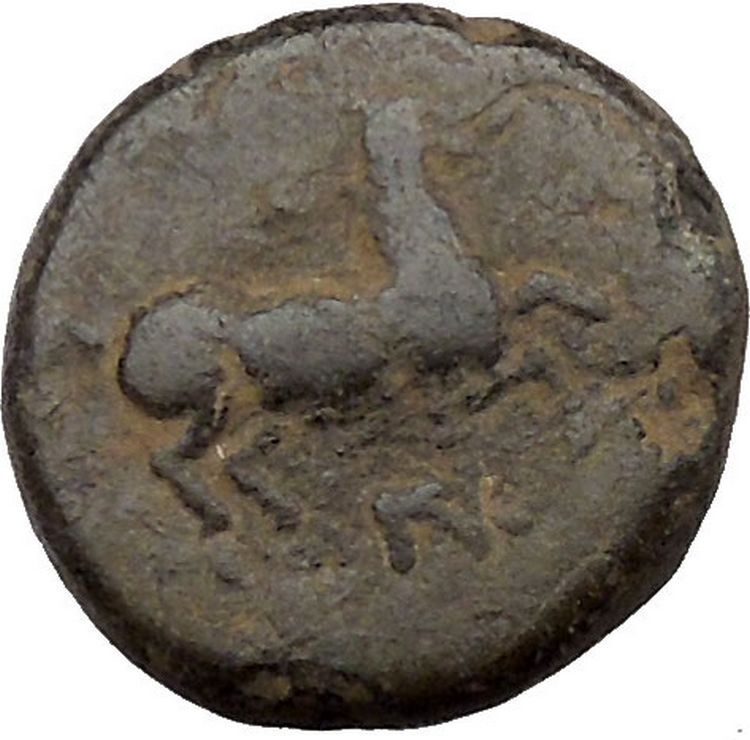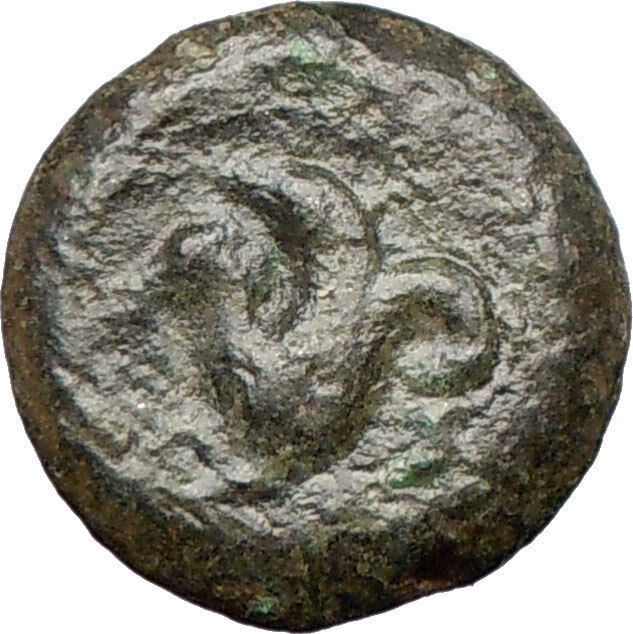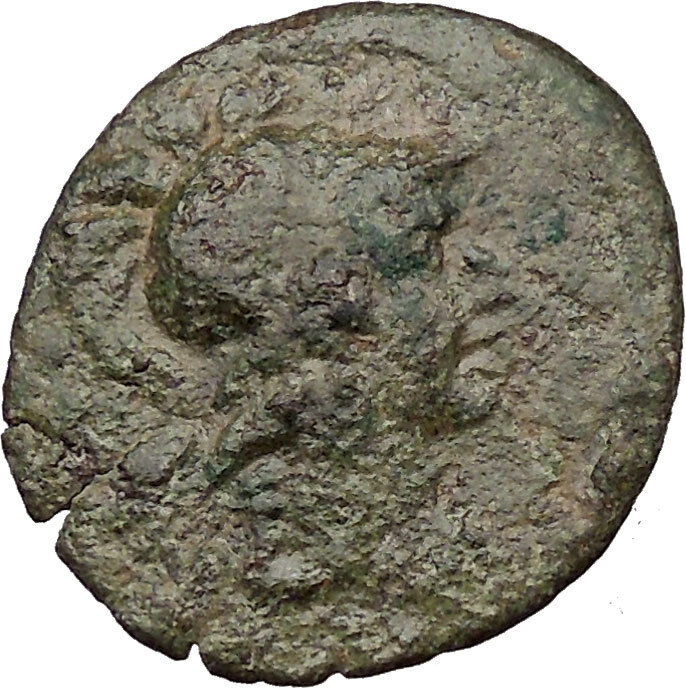|
Greek city of Cotiaeum in Phrygia
Time of Roman Emperor Gallienus, 253-268 A.D.
Bronze Diassarion 24mm (8.43 grams)
Struck under the archon Diogenes, son of Dionysios circa 253-268 A.D.
Reference: SNG Copenhagen 319. hNG von Aulock 3776
HMOC KOTIAEΩN ; Diademed bust of the Demos of Cotiaeum to right, with slight drapery over his far shoulder.
EΠI ΔIOΓENOYC ΔIONYCIOY / A-P/X KOTIAEΩ/N ; Zeus seated to left on a low throne, holding eagle in his extended right hand and scepter with his left.
You are bidding on the exact item pictured, provided with a Certificate of Authenticity and Lifetime Guarantee of Authenticity.
Demos. The ordinary citizens of an ancient Greek city-state, considered as a political entity; population; the common people.
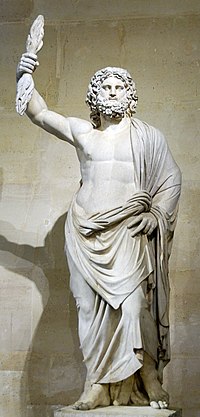 In the ancient Greek religion, Zeus was the “Father of Gods and men” who ruled the Olympians of Mount Olympus as a father ruled the family. He was the god of sky and thunder in Greek mythology. His Roman counterpart is Jupiter and Etruscan counterpart is Tinia. In the ancient Greek religion, Zeus was the “Father of Gods and men” who ruled the Olympians of Mount Olympus as a father ruled the family. He was the god of sky and thunder in Greek mythology. His Roman counterpart is Jupiter and Etruscan counterpart is Tinia.
Zeus was the child of Cronus and Rhea, and the youngest of his siblings. In most traditions he was married to Hera, although, at the oracle of Dodona, his consort was Dione: according to the Iliad, he is the father of Aphrodite by Dione. He is known for his erotic escapades. These resulted in many godly and heroic offspring, including Athena, Apollo and Artemis, Hermes, Persephone (by Demeter), Dionysus, Perseus, Heracles, Helen of Troy, Minos, and the Muses (by Mnemosyne); by Hera, he is usually said to have fathered Ares, Hebe and Hephaestus.
As Walter Burkert points out in his book, Greek Religion, “Even the gods who are not his natural children address him as Father, and all the gods rise in his presence.” For the Greeks, he was the King of the Gods, who oversaw the universe. As Pausanias observed, “That Zeus is king in heaven is a saying common to all men”. In Hesiod’s Theogony Zeus assigns the various gods their roles. In the Homeric Hymns he is referred to as the chieftain of the gods.
His symbols are the thunderbolt, eagle, bull, and oak. In addition to his Indo-European inheritance, the classical “cloud-gatherer” also derives certain iconographic traits from the cultures of the Ancient Near East, such as the scepter. Zeus is frequently depicted by Greek artists in one of two poses: standing, striding forward, with a thunderbolt leveled in his raised right hand, or seated in majesty.
Kütahya is a city in western Turkey with 237,804 inhabitants (2011 estimate), lying on the Porsuk river, at 969 metres above sea level. It is the capital of Kütahya Province, inhabited by some 564,294 people (2011 estimate). The region of Kütahya has large areas of gentle slopes with agricultural land culminating in high mountain ridges to the north and west. The city’s Greek name was Kotyaion, Latinized in Roman times as Cotyaeum.
The ancient world knew present-day Kütahya as Cotyaeum. It became part of the Roman province of Phrygia Salutaris, but in about 820 became the capital of the new province of Phrygia Salutaris III. Its bishopric thus changed from being a suffragan of Synnada to a metropolitan see, although with only three suffragan sees according to the Notitia Episcopatuum of Byzantine Emperor Leo VI the Wise (886-912), which is dated to around 901-902. According to the 6th-century historian John Malalas, Cyrus of Panopolis, who had been prefect of the city of Constantinople, was sent there as bishop by Emperor Theodosius II (408-50), after four bishops of the city had been killed. (Two other sources make Cyrus bishop of Smyrna instead.) The bishopric of Cotyaeum was headed in 431 by Domnius, who attended the Council of Ephesus, and in 451 by Marcianus, who was at the Council of Chalcedon. A source cited by Le Quien says that a bishop of Cotyaeum named Eusebius was at the Second Council of Constantinople in 553. Cosmas was at the Third Council of Constantinople in 680-681. Ioannes, a deacon, represented an unnamed bishop of Cotyaeum at the Trullan Council in 692. Bishop Constantinus was at the Second Council of Nicaea in 692, and Bishop Anthimus at the Photian Council of Constantinople (879), No longer a residential bishopric, Cotyaeum is today listed by the Catholic Church as a titular see.
Under the reign of Byzantine Emperor Justinian I the town was fortified with a double-line of walls and citadel. In 1071 Cotyaeum (or Kotyaion) fell to the Seljuk Turks and later switched hands, falling successively to the Crusaders, Germiyanids, and Timur-Leng (Tamerlane), until finally being incorporated into the Ottoman Empire in 1428. During this time a large number of Christian Armenians settled in Kotyaion/Kütahya, where they came to dominate the tile-making and ceramic-ware production. Kütahya emerged as a renowned center for the Ottoman ceramic industry, producing tiles and faience for mosques, churches, and official buildings in places all over the Middle East. It was initially the center of Anatolia Eyalet till 1827, when Hüdavendigâr Eyalet was formed. It was later sanjak centre in Hüdavendigâr Vilayet in 1867. Troops of Ibrahim Pasha of Egypt briefly occupied it in 1833.
The fortifications of the city and its environs, which were vital to the security and economic prosperity of the region, were built and rebuilt from antiquity through the Ottoman Period. However, the dates assigned to the many periods of construction and the assessment of the military architecture are open to various interpretations.
At the end of the nineteenth century Kütahya’s population was counted at 120,333, of which 4,050 were Greeks, 2,533 Armenians, 754 Catholics, and the remainder Turks and other Muslims. Kütahya and the district itself were spared the ravages of the Armenian Genocide of 1915, when the Turkish governor, Faik Ali Bey, who was Kurdish in origin, went to extreme lengths to protect the Armenian population from being uprooted and sent away on death marches. However, this governor was removed from office in March 1916, and the city’s Armenian community suffered in the aftermath under the rule of his successor, Ahmet Mufit Bey. Kütahya was occupied by Greek troops on 17 July 1921 after Battle of Kütahya-Eskişehir during Turkish War of Independence and captured in ruins[citation needed] after the Battle of Dumlupınar during the Great Offensive on 30 August 1922. The craft industry of Armenian ceramics in Jerusalem was started by Armenian ceramicist David Ohannessian [he], master of a Kütahya workshop between 1907 and 1915, who was deported from Kütahya in early 1916, during the Armenian genocide, and rediscovered, living as a refugee in Aleppo in 1918, by Sir Mark Sykes, a former patron, who connected him to the new Military Governor of Jerusalem, Sir Ronald Storrs and arranged for Ohannessian to travel to Jerusalem to participate in a planned British restoration of the Dome of the Rock.
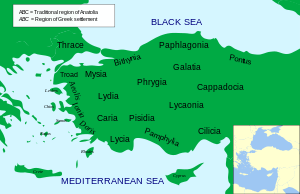 In antiquity, Phrygia was a kingdom in the west central part of Anatolia, in what is now Turkey, centered on the Sakarya River. In antiquity, Phrygia was a kingdom in the west central part of Anatolia, in what is now Turkey, centered on the Sakarya River.
During the heroic age of Greek mythology, several legendary kings were Phrygians: Gordias whose Gordian Knot would later be cut by Alexander the Great, Midas who turned whatever he touched to gold, and Mygdon who warred with the Amazons. According to Homer’s Iliad, the Phrygians were close allies of the Trojans and participants in the Trojan War against the Achaeans. Phrygian power reached its peak in the late 8th century BC under another, historical, king: Midas, who dominated most of western and central Anatolia and rivaled Assyria and Urartu for power in eastern Anatolia. This later Midas was, however, also the last independent king of Phrygia before its capital Gordium was sacked by Cimmerians around 695 BC. Phrygia then became subject to Lydia, and then successively to Persia, Alexander and his Hellenistic successors, Pergamon, Rome and Byzantium. Phrygians were gradually assimilated into other cultures by the early medieval era, and after the Turkish conquest of Anatolia the name Phrygia passed out of usage as a territorial designation.
|





 In the ancient Greek religion, Zeus was the “Father of Gods and men” who ruled the Olympians of Mount Olympus as a father ruled the family. He was the god of sky and thunder in Greek mythology. His Roman counterpart is Jupiter and Etruscan counterpart is Tinia.
In the ancient Greek religion, Zeus was the “Father of Gods and men” who ruled the Olympians of Mount Olympus as a father ruled the family. He was the god of sky and thunder in Greek mythology. His Roman counterpart is Jupiter and Etruscan counterpart is Tinia. In antiquity, Phrygia was a kingdom in the west central part of Anatolia, in what is now Turkey, centered on the Sakarya River.
In antiquity, Phrygia was a kingdom in the west central part of Anatolia, in what is now Turkey, centered on the Sakarya River.

